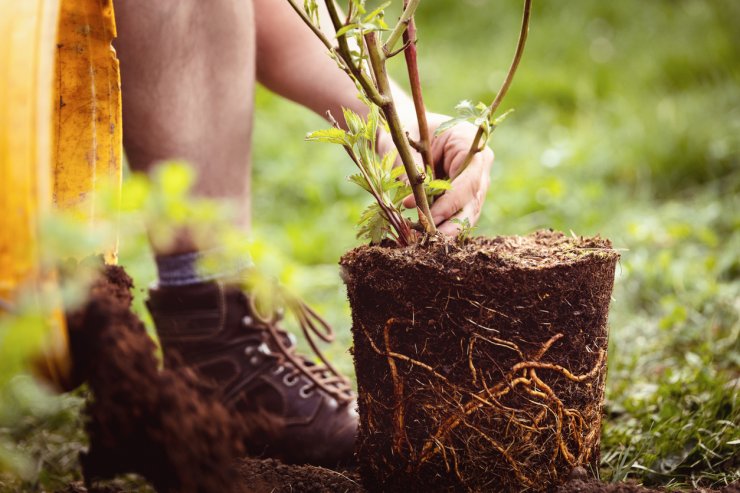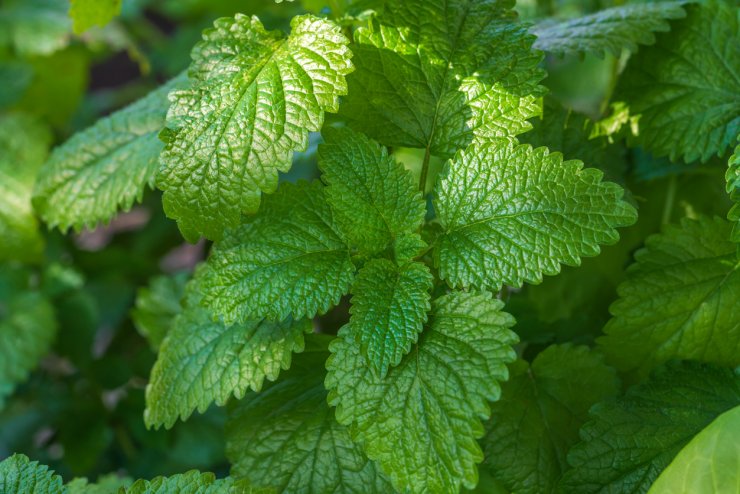
Planting a blackberry bush.
Once you’ve prepared the ground, preferably a year ahead, it’s time to actually plant your blackberry bushes! It’s easiest to work the ground in spring, and most blackberry varieties are “programmed” to fruit in the summer or early fall. Early spring is also when canes are dormant.
You can also plant in late fall, unless you’re in a zone with very cold winter temperatures, which could kill off young plants.
Plant your bushes immediately, or if you can’t, keep them cool—in a refrigerator or other cool place—and keep the roots moist. When you’re ready to plant, soak the roots in water for an hour before planting.
If you haven’t already amended the soil in the previous year, break up the soil well and add two parts of organic garden compost and one part sand. This provides nutrients and improves drainage.
Cut broken roots from your bushes, and cover the roots as you prepare to plant. Blackberries often die when their roots are exposed to sunlight while planting!
Plant your bushes 4 feet apart, in rows 3 to 8 feet apart (the wider space is for trailing varieties). Dig a hole or holes that is wide enough to spread the roots out—generally twice the width of the root ball. Plant your bushes about 1 inch deeper than they were at the nursery for bare root plants, and at the same level for potted plants.
Once you’ve spread out the roots at the appropriate depth, shovel the dirt back in the hole. Give 1 to 2 inches of water immediately, keeping in mind that blackberry bushes have shallow roots and the soil shouldn’t be allowed to dry out completely to a depth of 6 inches.
Add a weak liquid nitrogen fertilizer, but be sure to keep fertilizer 3 to 4 inches away from the base of the plant, or you risk burning the roots. Be sure to add a layer of mulch around your blackberries to keep weeds down.
Companion planting for blackberries

Lemon mint makes a great companion plant for blackberries.
The gardening practice of locating plants close to others so that they benefit each other helps boost fruit yield in blackberries. In this case, feel free to plant low-growing groundcover plants, such as any variety of mint, lemon balm, bee balm, hyssop, borage, thyme, or chives. These plants attract bees for pollination and help repel predators such as beetles and mice.
Also, planting beans or peas near the base of blackberry bushes puts nitrogen into the soil. Other companion plants include tansy, blueberries, and rue.
Have you followed these steps in planting blackberry bushes? Please share any tips with us in the comments.


 Previous
Previous

